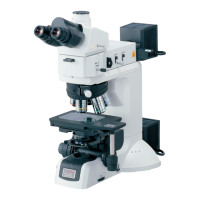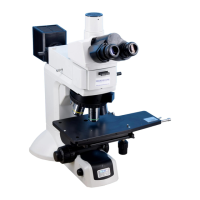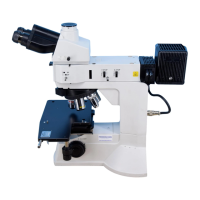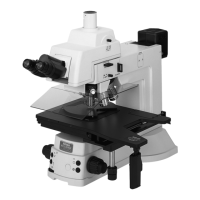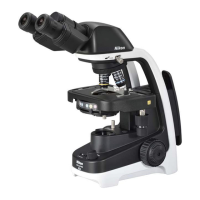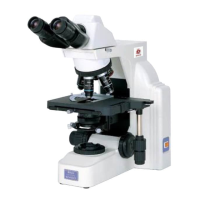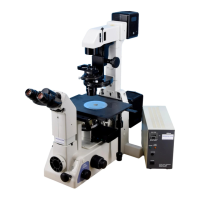29
III. Operation of Each Part
9
Condenser Operation
The P swing-out condenser must be attached to perform the polarization microscopy.
How to use the P swing-out condenser
The top lens of the P swing-out condenser can
be moved outside the optical path with the
swing-out lever.
During normal bright-field microscopy or
orthoscopic microscopy using a low-power
objective of 4x or lower, swing out the top
lens.
During microscopies using an objective of 10x
or higher or conoscopic microscopy, the top
lens is placed into the optical path.
During measurement of retardation or
evaluation by interference color, swing out the
top lens (the condenser aperture diaphragm
may be stopped down) and illuminate with
light that is as parallel to the optical axis as
possible.
Depending on the type of objective, the indicated numerical aperture of the objective may
not be achieved. For example, when an objective with an N.A. of 1.4 is used, the maximum
aperture of the swing-out condenser will be only about 65% of the objective’s N.A., even
when the condenser aperture diaphragm is wide open.
ND
8
NC
B
F.S
.
0.
4
0
.
2
0
.
8
0
.
6
J
A
P
A
N
A
chr
0
.
9
0
0
.4
0.
2
0
.
8
0.6
JA
PA
N
A
chr
0
.
9
0
Top lens
Swing-out lever
